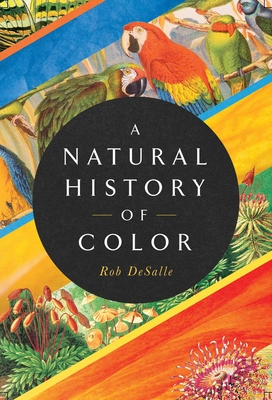You are here
Back to topA Natural History of Color: The Science Behind What We See and How We See it (Hardcover)
Email or call for price.
Out of Print
Description
A star curator at the American Museum of Natural History widens the palette and shows how the physical, natural, and cultural context of color are inextricably tied to what we see right before our eyes.
Is color a phenomenon of science or a thing of art? Over the years, color has dazzled, enhanced, and clarified the world we see, embraced through the experimental palettes of painting, the advent of the color photograph, Technicolor pictures, color printing, on and on, a vivid and vibrant celebrated continuum. These turns to represent reality in “living color” echo our evolutionary reliance on and indeed privileging of color as a complex and vital form of consumption, classification, and creation. It’s everywhere we look, yet do we really know much of anything about it?
Finding color in stars and light, examining the system of classification that determines survival through natural selection, studying the arrival of color in our universe and as a fulcrum for philosophy, DeSalle’s brilliant A Natural History of Color establishes that an understanding of color on many different levels is at the heart of learning about nature, neurobiology, individualism, even a philosophy of existence. Color and a fine tuned understanding of it is vital to understanding ourselves and our consciousness.
About the Author
Rob DeSalle is a curator in the Sackler Institute for Comparative Genomics and professor at the Richard Gilder Graduate School at the American Museum of Natural History. He is the author of The Science of Jurassic Park and the Lost World (with David Lindley, 1997) and the coauthor of Welcome to the Microbiome: Getting to Know the Trillions of Bacteria and Other Microbes In, On, and Around You (2015), among others.
Hans Bachor is based in Canberra Australia. He is Emeritus Professor at The Australian National University, from where he has pioneered experimental quantum optics in Australia and is co-author to the Guide to Experiments in Quantum Optics. As Mind in Residence at Questacon - the National Science and Technology Centre he contributes to science communication with his science shows. Through the The Australian Academy of Science he fosters education and raises the public awareness of science.
Praise For…
“Elucidating and amusing.”
— Publishers Weekly
"Admirable and lucid. A necessary corrective to the notion that the human individual is fully subordinate to genes and evolution."
— Shelf Awareness
"Looking at the role of chance in human evolution, the authors argue that the species has tremendous potential to change its behavior."
— The New York Times Book Review (Praise for THE ACCIDENTAL HOMO SAPIENS)
One comes away from this book with a sense that both the scientific description of color and the science that is used to arrive at that description are mutually reinforcing: a feedback loop wherein a par-ticular understanding of perception shapes a particular understanding of the world, which, in turn, shapes a particular understanding of perception, and so forth. In this way, the book is something of a meta-exercise in the history of perception—a way of viewing one’s own perceptions in a historical mirror. If one ap-proaches the book with this precept in mind, the experience will be rewarding.
— Michael Rossi
